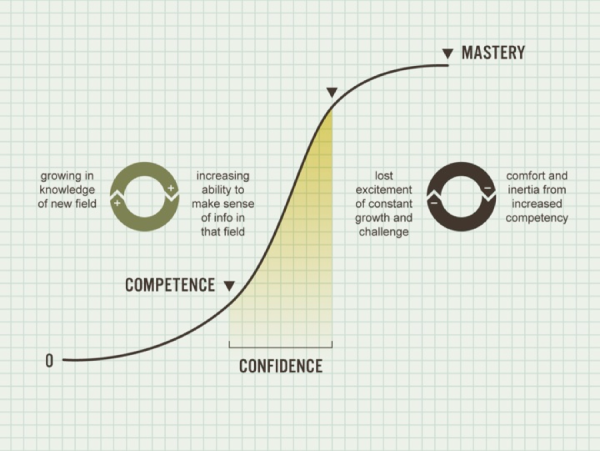Do you ever feel like you’ve plateaued as a teacher? Like you’re stagnant and not progressing? And does that lead you to consider other work opportunities besides teaching? If so, this research will help you understand where those feelings are coming from and why they are a sign of healthy, needed change on your horizon.
Years 1-5 of Teaching – as experienced by many teachers:
- Year 1: Whoa, can you say, “Drinking from a fire hydrant?” There are so many new, stretching, and exciting things the first year of teaching, and for many teachers, overwhelm.
- Year 2: “Okay, okay. I’ve done this before.” The second year of teaching you have a bit of experience under your belt and things aren’t so “new” and overwhelming.
- Years 3-4: “I got this!” Lesson plans in place (if you’re fortunate enough to teach the same topics or grade level again) classroom management practices are more in place and you encounter new things with experienced perspective.
- Year 5+: “Um… What now? What’s next”

Sometime around year five is when many teachers start feeling like I did: like work is beginning to feel like a rerun of Groundhog’s day and that they’re beginning to “plateau”. The “newness” and growth part of the curve have started leveling out and, while not wanting to become “stagnant,” many teachers start to wonder, “What can I do next.”
I remember feeling like I was crazy for not being content in my classroom. “This is what I had trained for years to do. This was my dream. This is what my master’s degree was all about and I’m good at this….” So why was I no longer happy in my classroom? Why did I find myself craving new opportunities?”
This is exactly what Whitney Johnson clarifies so well in her work on the “S Curve” illustrated below.

Here’s how it works:
When a person is new to something, they start out on the bottom-left of this curve. As they gain experience and improve, they hit that fantastic “competence” stage where they have “confidence” as the chart illustrates. What we see shortly after that however, is that they then hit the “mastery” level and plateau. What happens then? Well, knowing that we were “born to grow”, we seek for the next “s-curve” and area to continue to learn and grow.
This research goes hand-in-hand with research indicating that teachers who attained education degrees from more rigorous universities seek job growth and change faster than teachers who graduated from a less rigorous university.
It was hard for me to “see” it while I was going through it back then, but now, a handful of years later, it is crystal clear to me that I simply needed more opportunities to continue learning, growing, and influencing beyond the walls of my classroom. That continued growth was important to my health, happiness and well-being in many ways.

What to do about it:
If you know you need more growth work-wise and if your district or school organization do not have opportunities for you to grow and expand into, it is healthy and appropriate to meet that need by finding growth opportunities elsewhere. If you need help figuring out what to do next, Get the FREE download of the Top 10 Jobs for Teachers resource here.
Want to know where you are on Whitney Johnson’s S-curve? Take her FREE S-Curve Quiz here.
Ultimately, as I like to say, “Nothing healthy grows in stagnant waters.” If you are feeling “stuck” in your job, role, or classroom, if you feel like you are not progressing, and if you know you need growth, rest assured that seeking after that is not a selfish thing and it is not “quitting” it, my friends, is progressing on your career path, and that is something to be proud of.
